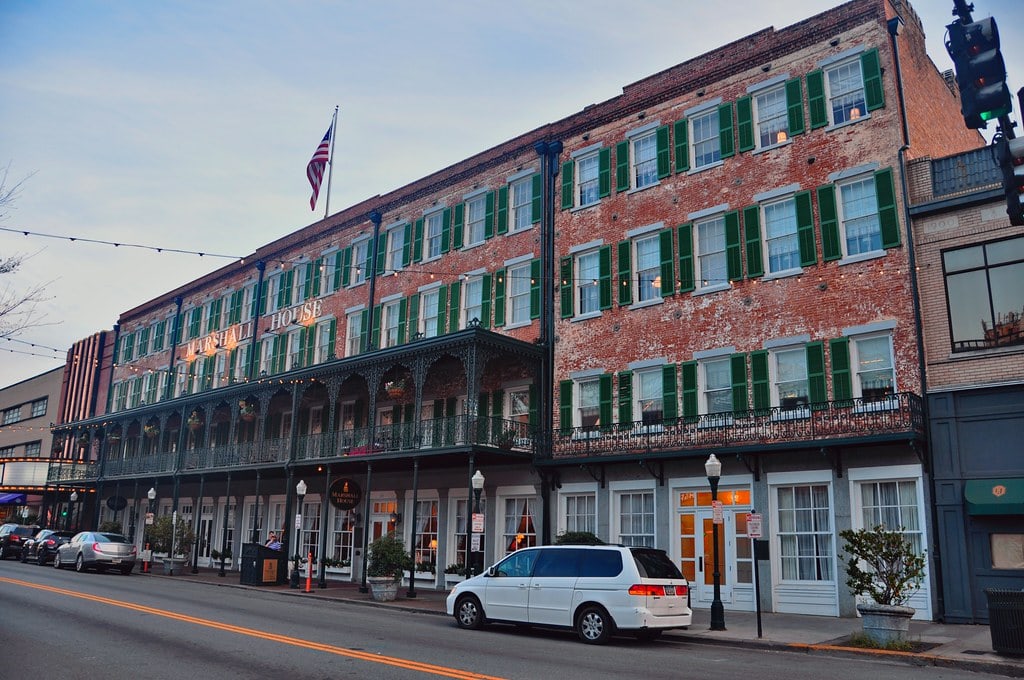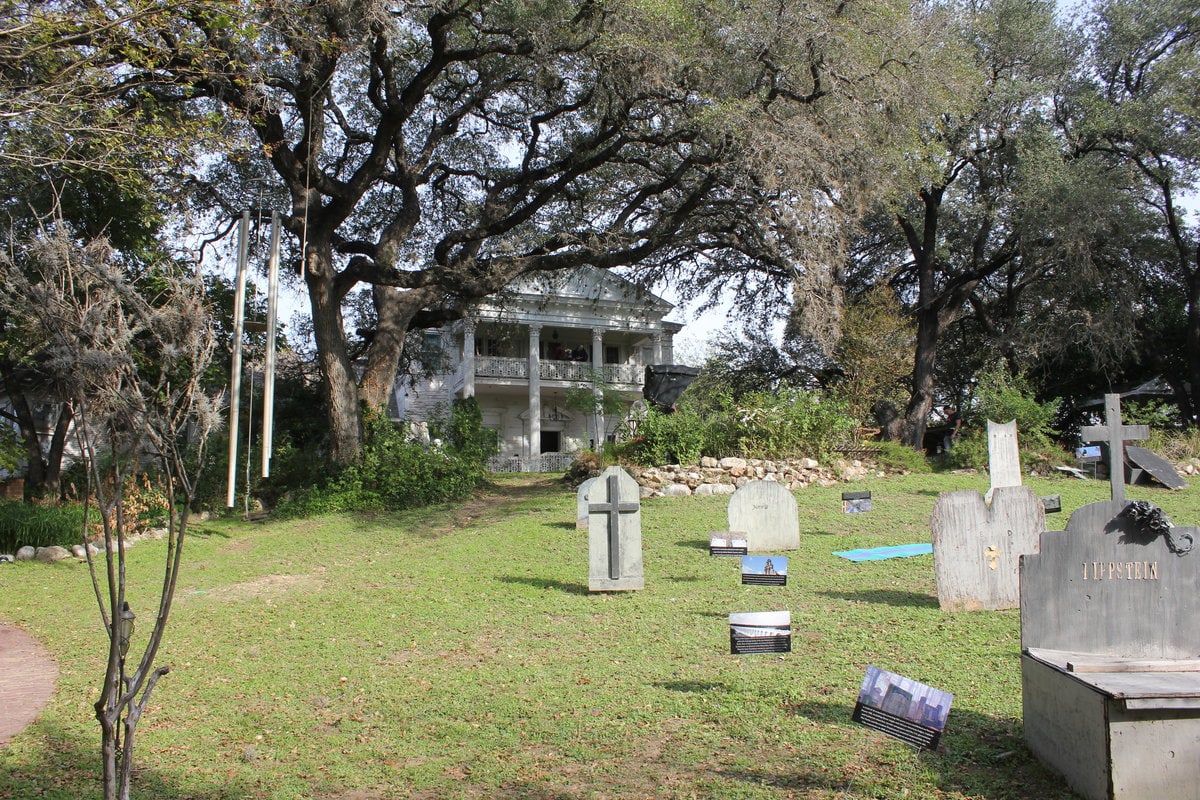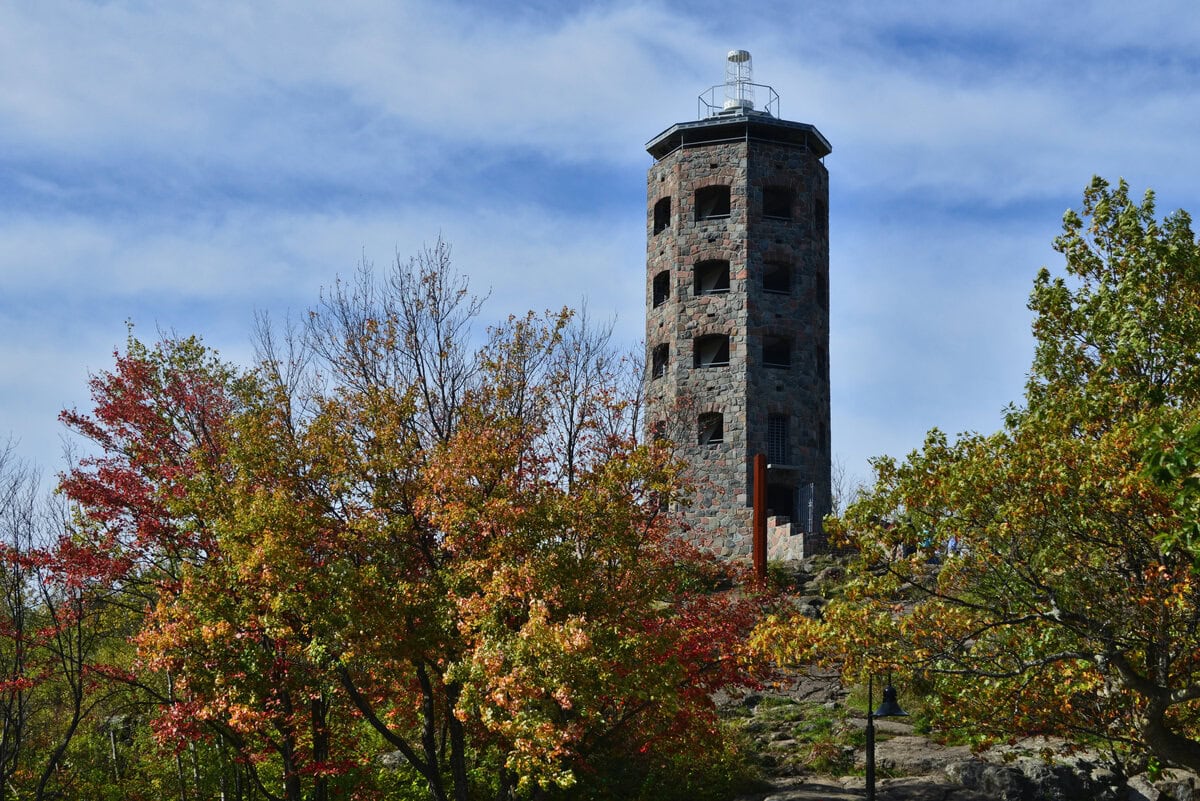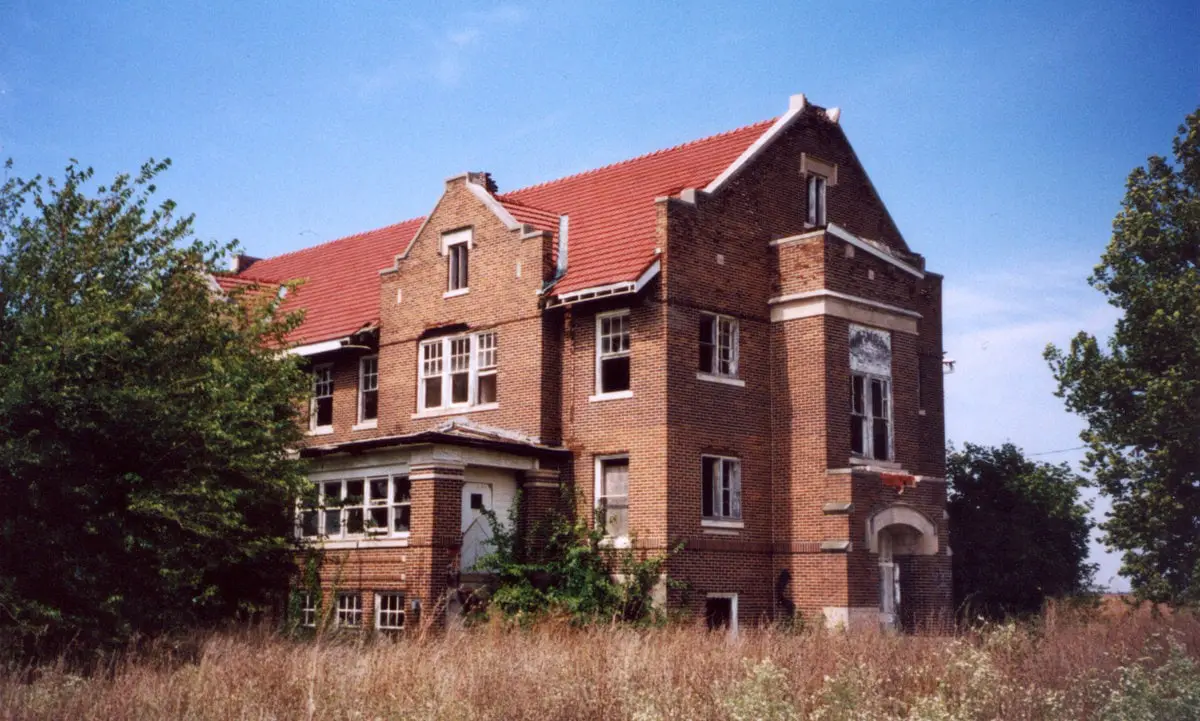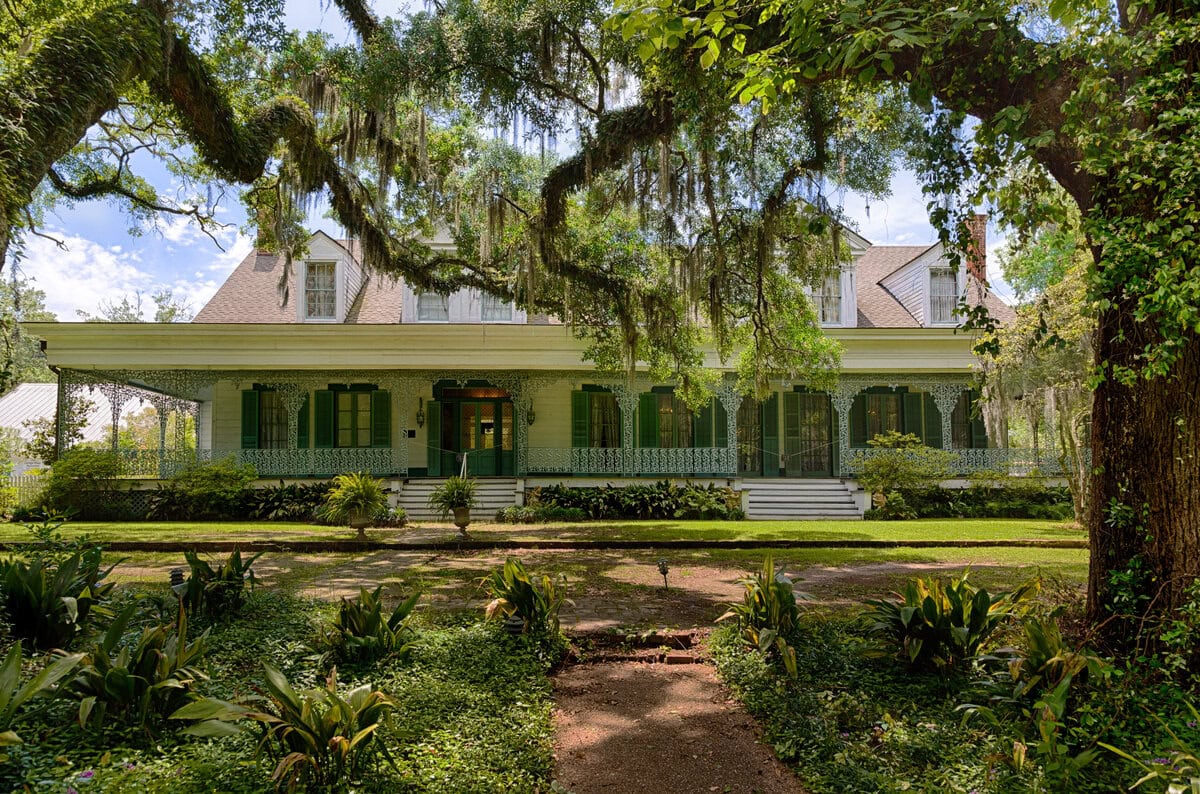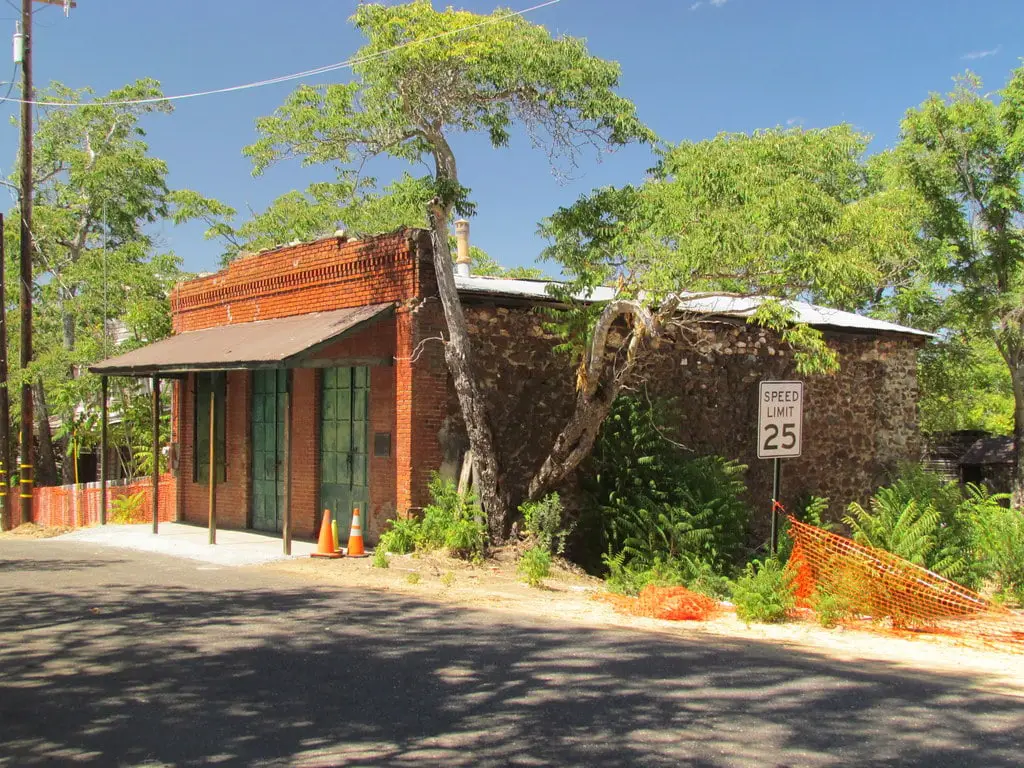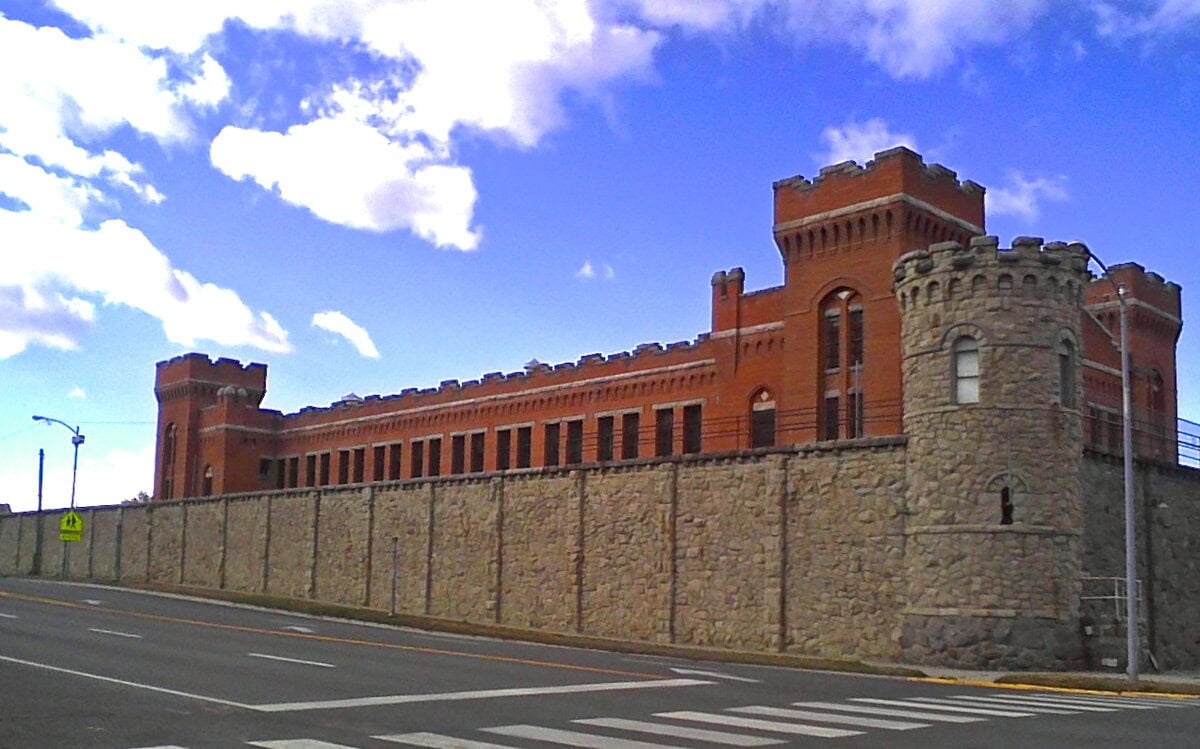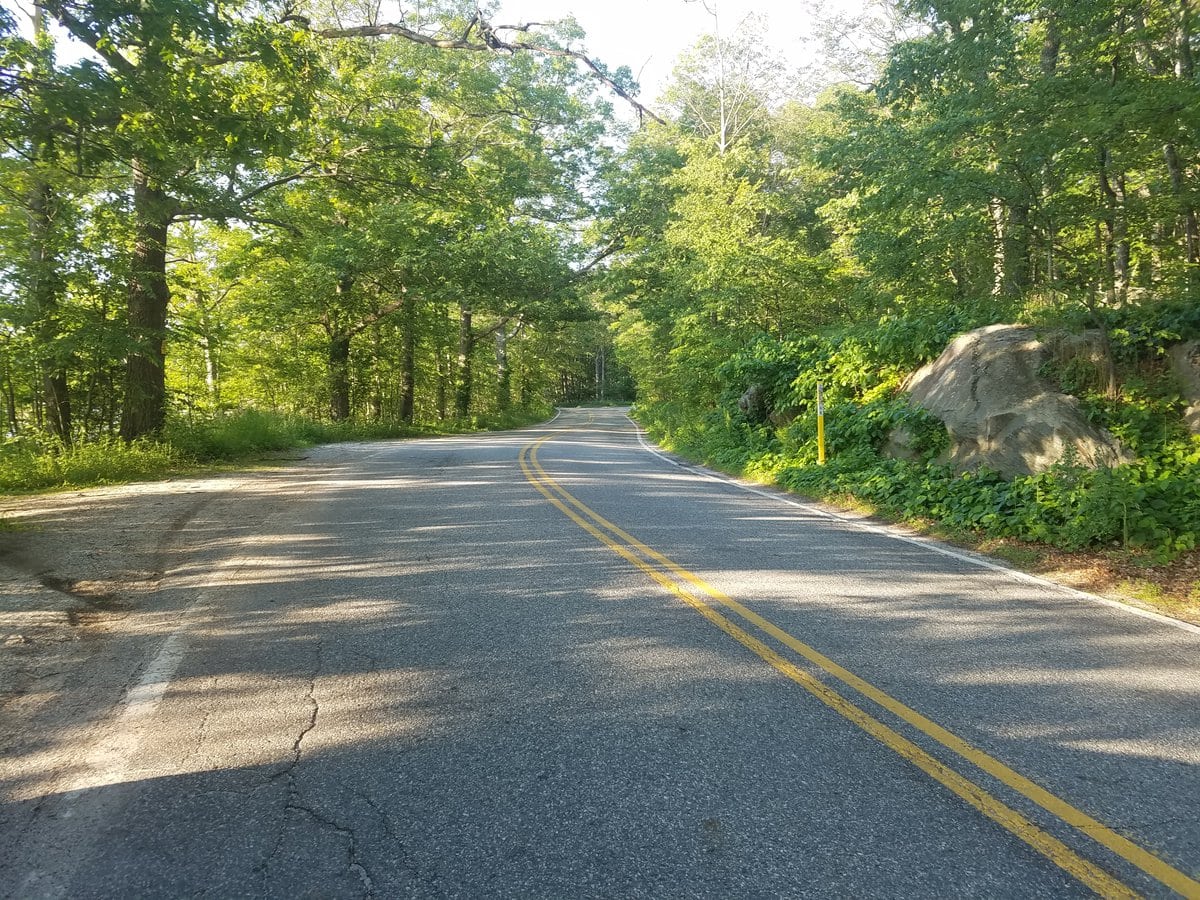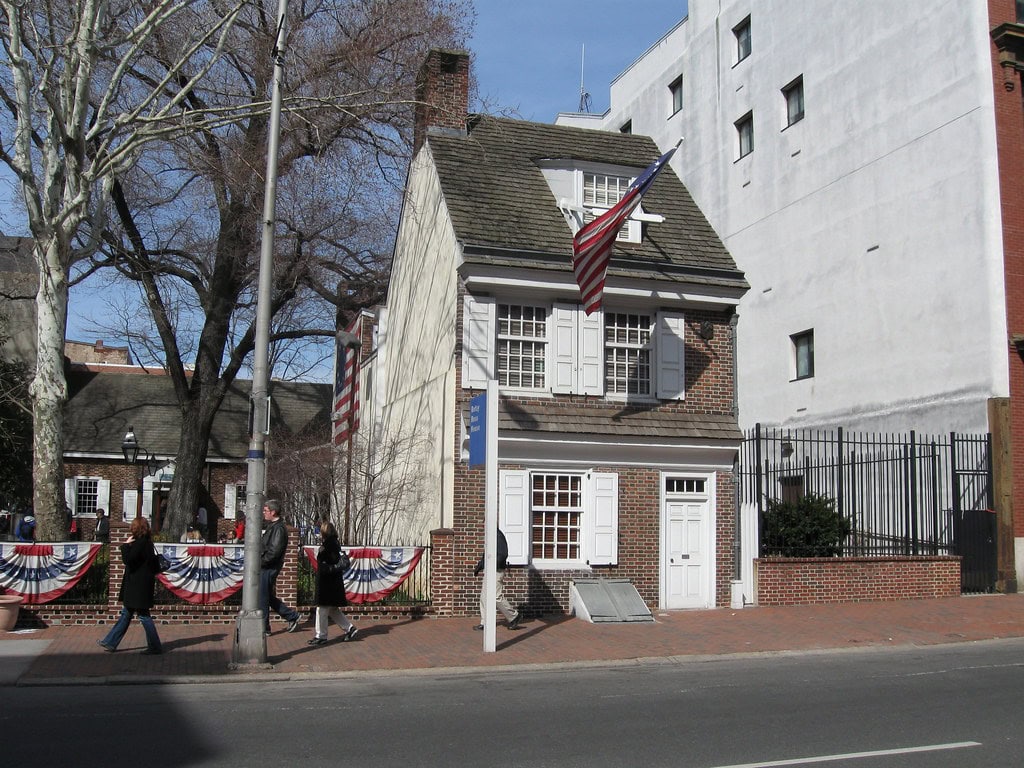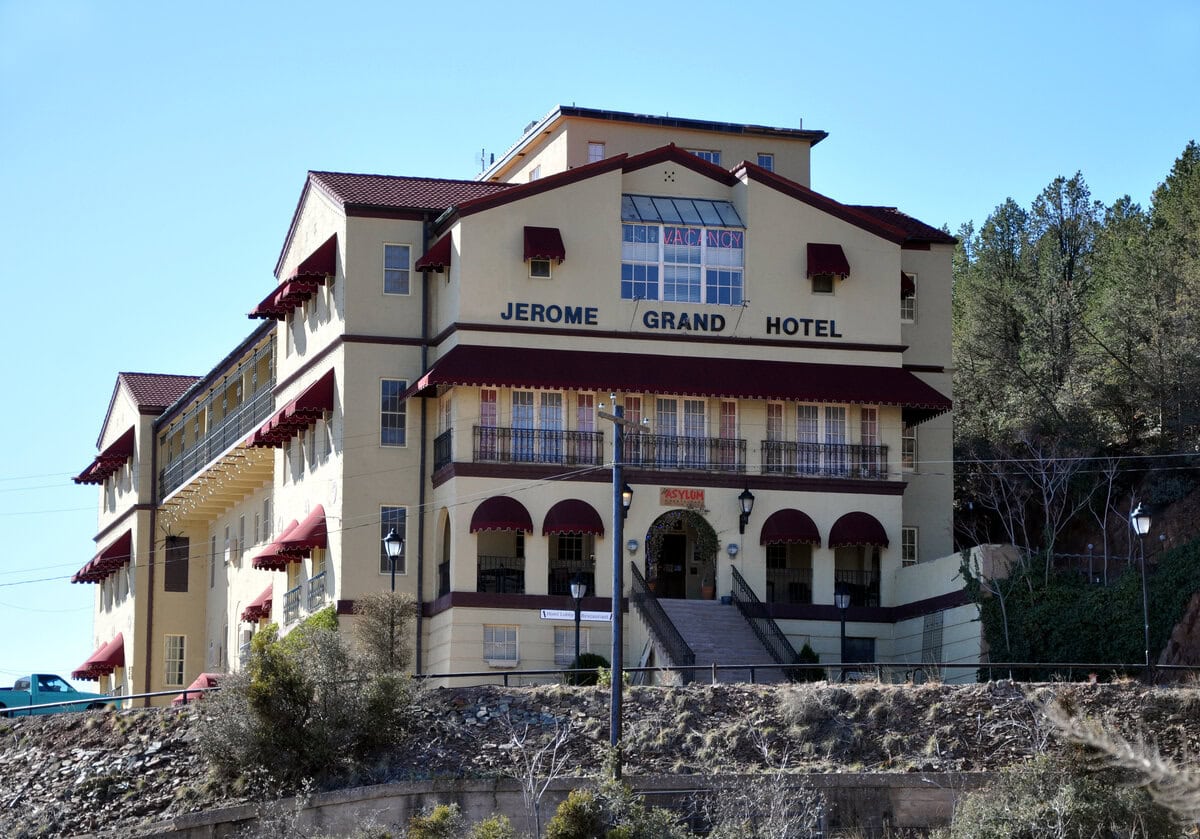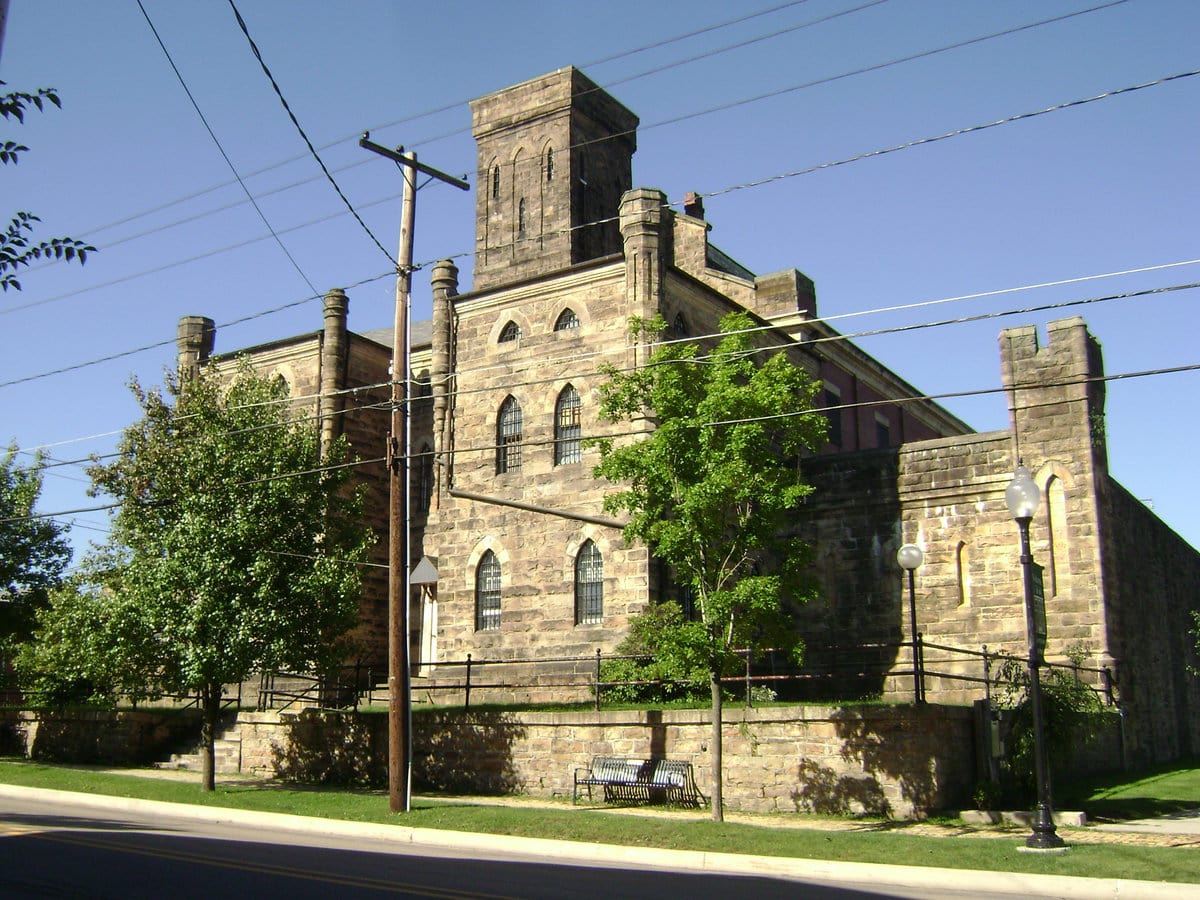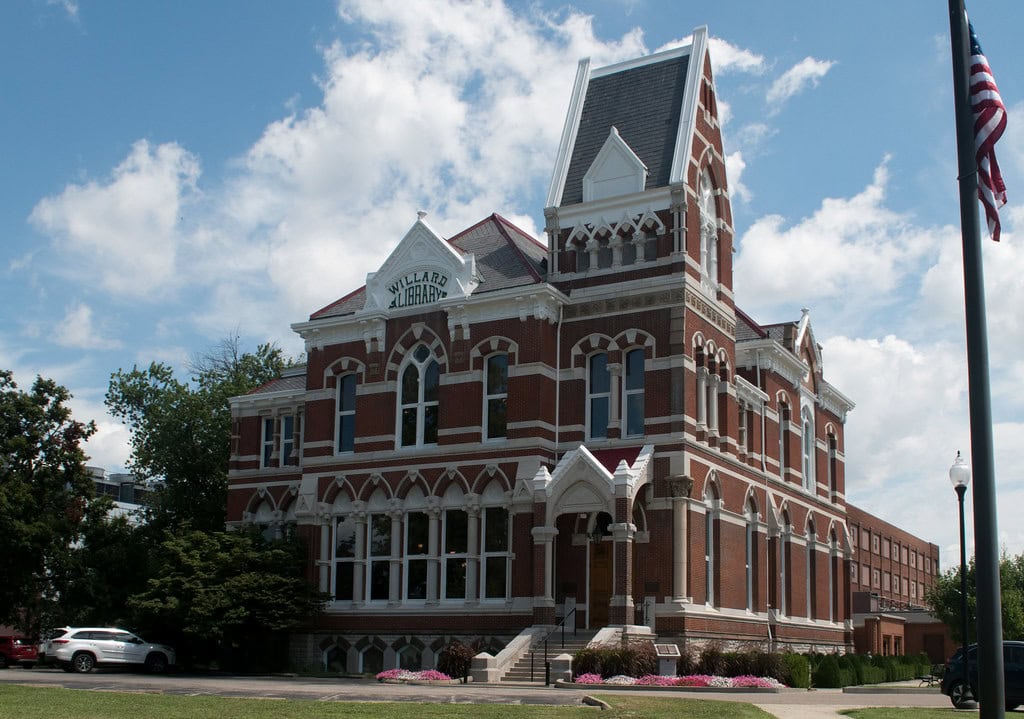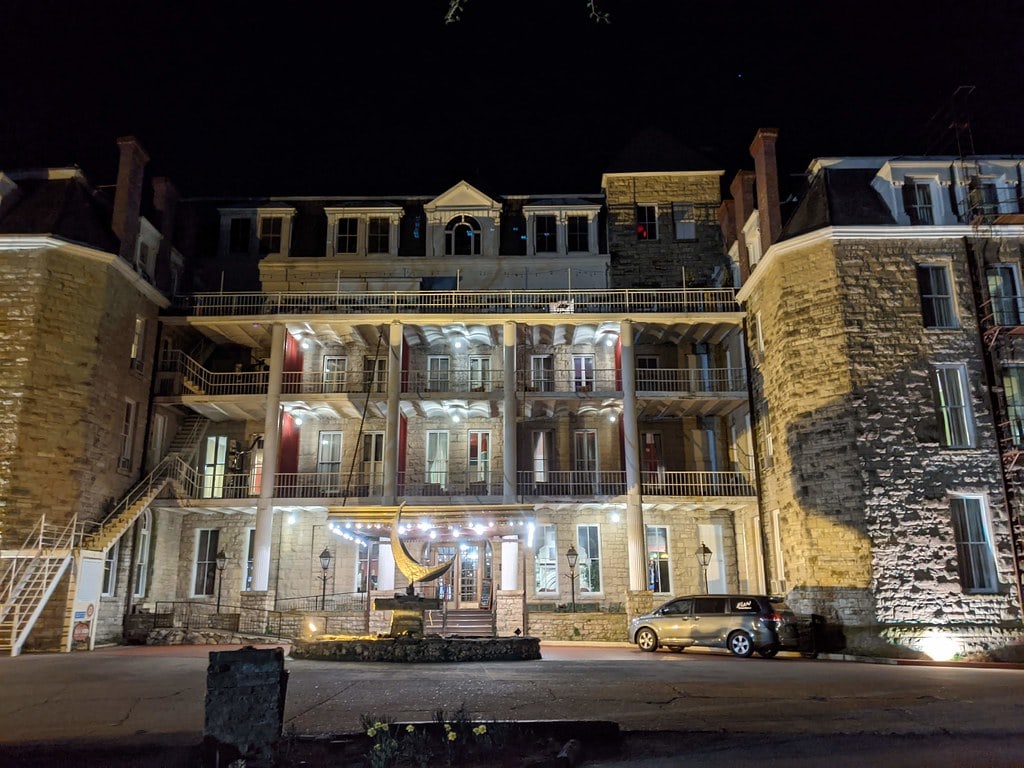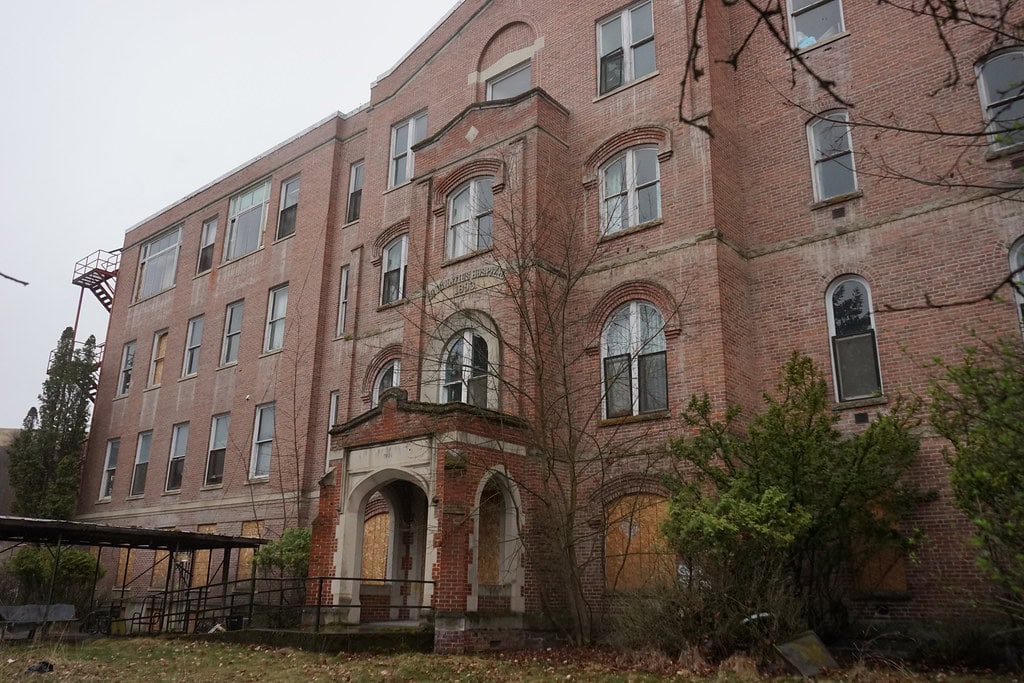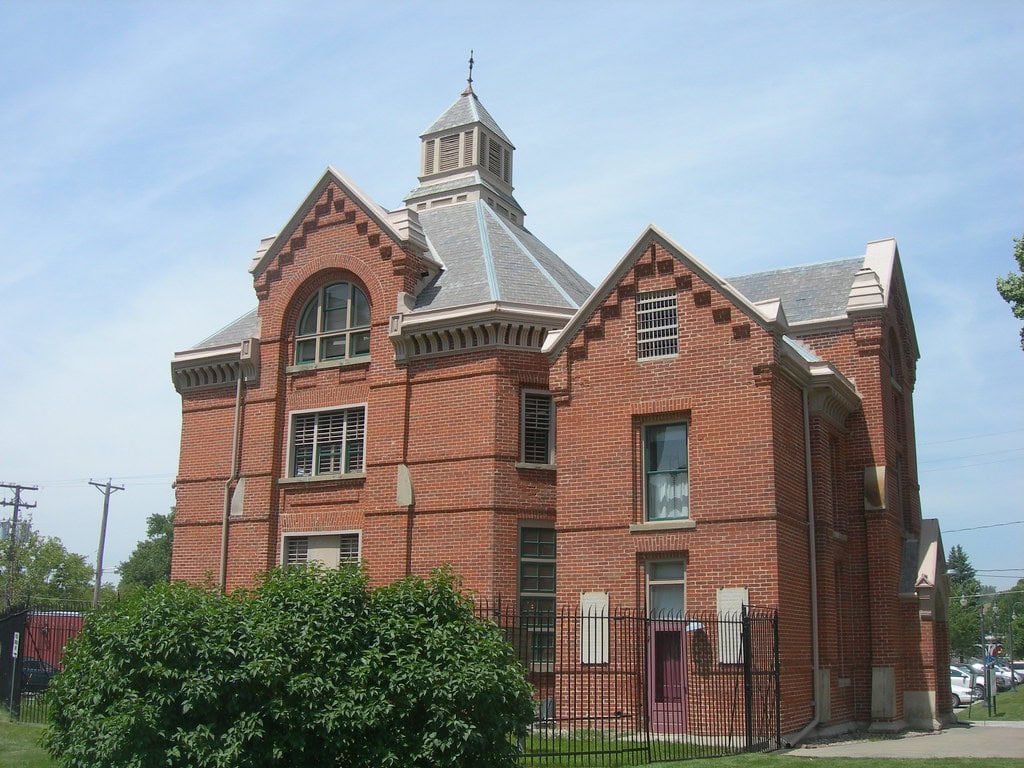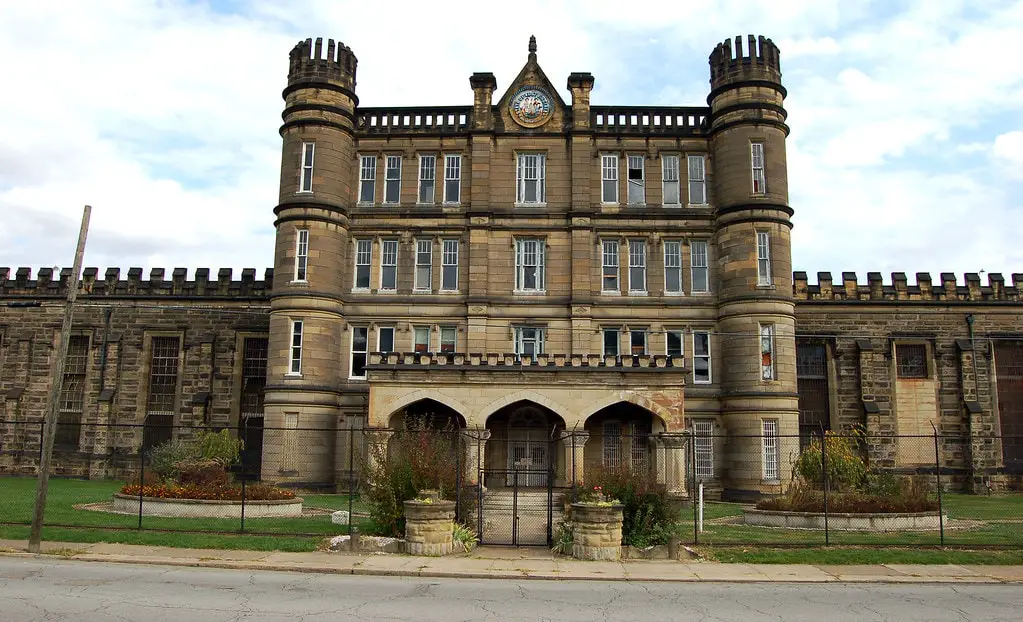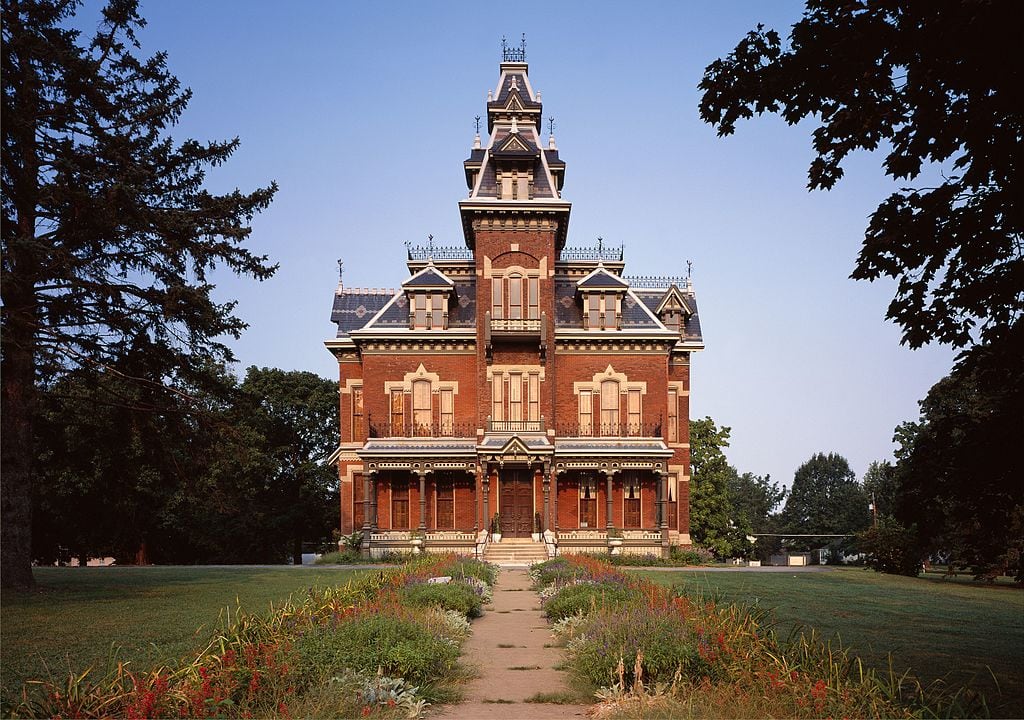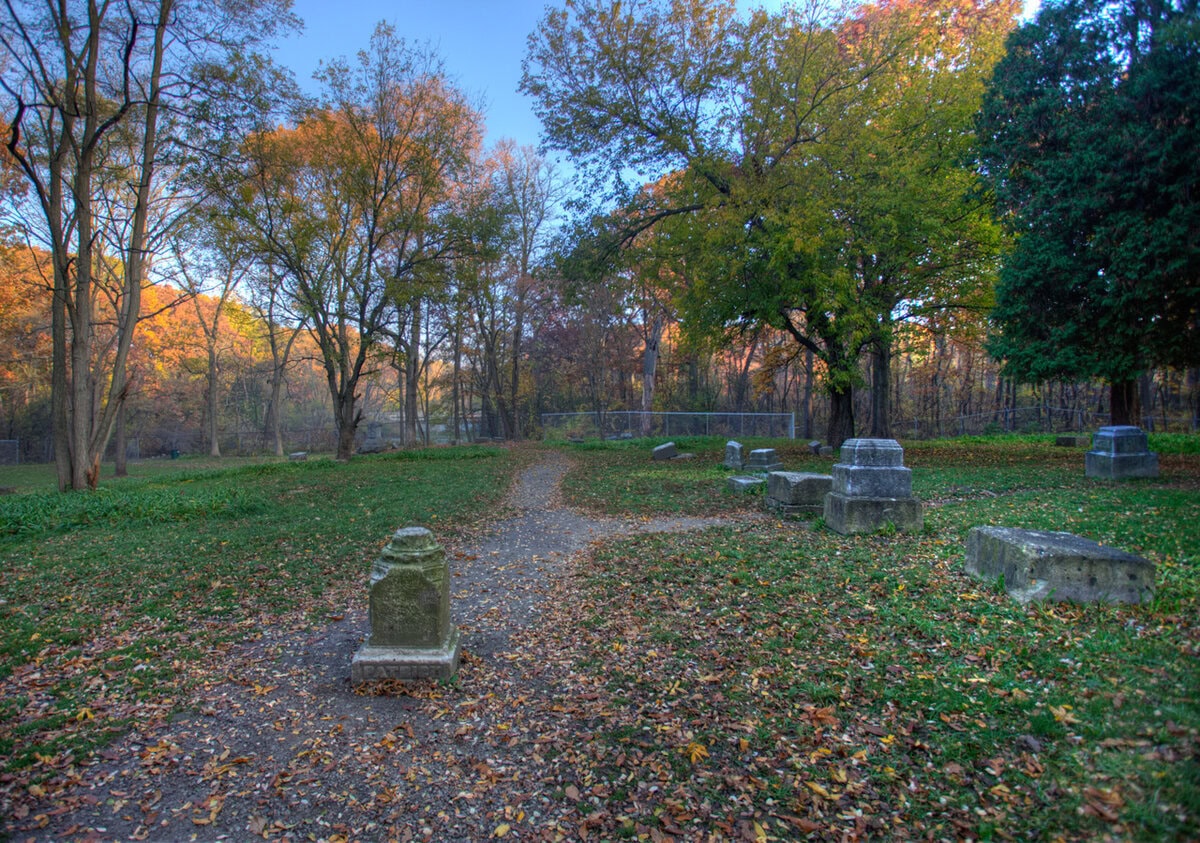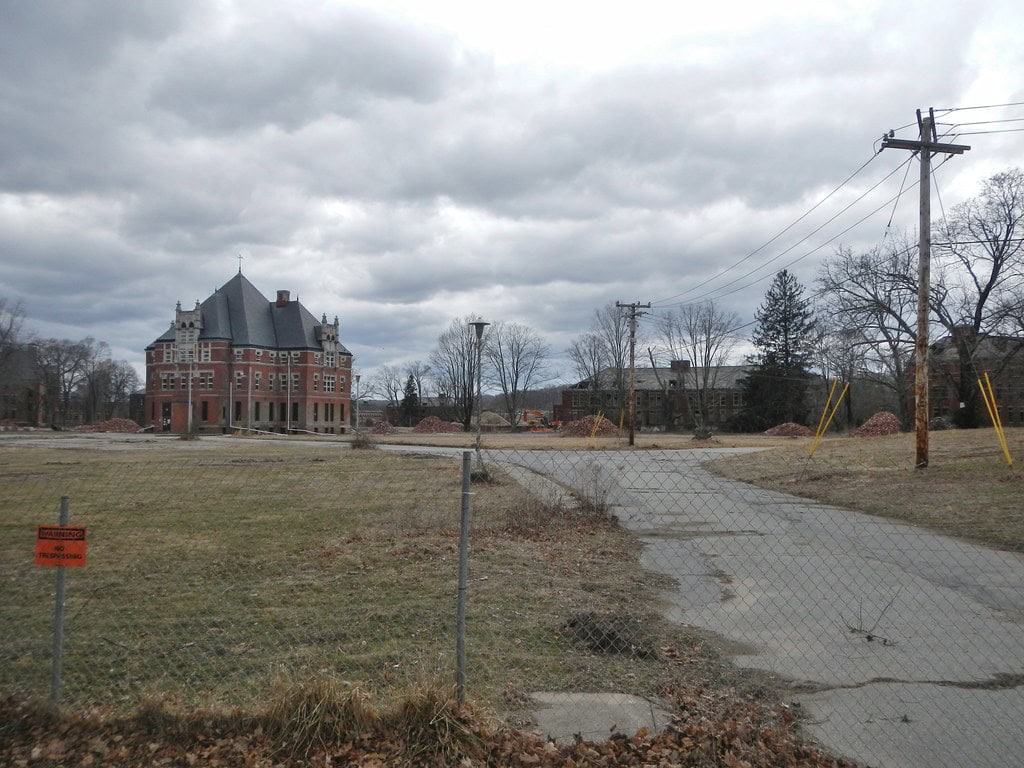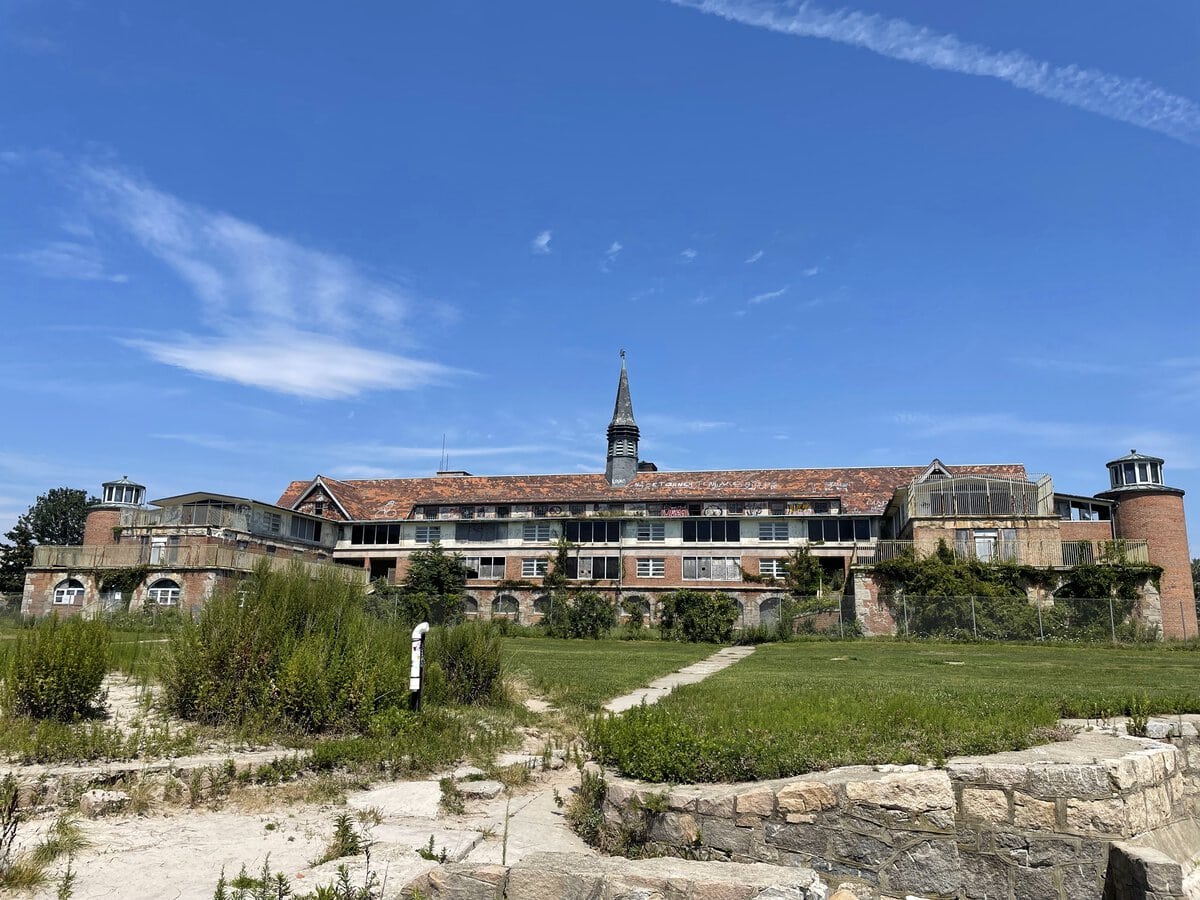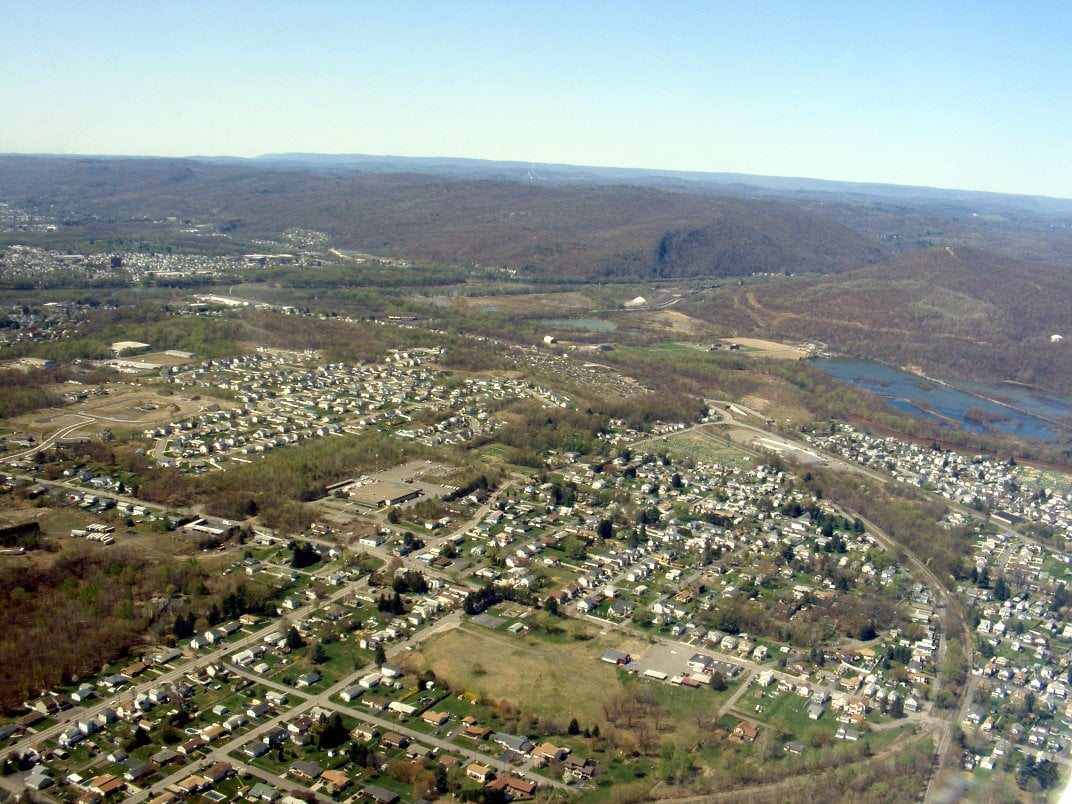Something Is Wrong with Montana
Montana is big, so big that the land itself feels old, like it's been watching. The wind doesn't whistle here; it whispers. The mountains don't just rise; they loom.
You could drive for miles without seeing a soul, but that doesn't mean you're alone. There's something uneasy about the silence, like the earth is holding its breath.
People disappear out here. Sometimes in the water. Sometimes on the roads. And sometimes, they don't disappear at all. They stay.
Stories cling to Montana like frost on a windowpane, delicate at first glance but impossible to scrape away.
Old ghosts drift through abandoned towns, their footsteps still echoing on wooden floors.
Something dark moves beneath the surface of Flathead Lake, waiting for an unlucky fisherman to lean too far over the side.
Hitchhikers appear out of nowhere, smiling, only to dissolve into the night.
The past doesn't stay buried here; it seeps into the soil, curls around your ankles, and waits for the right moment to pull you under.
Maybe that's why the legends don't die. People tell them in hushed voices, glancing over their shoulders as if something might be listening.
Because in Montana, something always is.
The Flathead Lake Monster - Something Lurks Beneath
A Shape in the Water
Flathead Lake looks peaceful enough from a distance. The water stretches out, still and glassy, reflecting the sky like a mirror.
But every so often, something moves beneath the surface, something long, something dark.
The ripples spread out in slow, unnatural patterns. Sometimes the fishermen see it first, their lines tugging in ways that don't make sense.
Sometimes, it's the kids, pointing from the shore, their voices edged with confusion, then fear.
It never stays long enough for anyone to get a clear look. Just a shadow slipping away, disappearing into the depths before anyone can be sure of what they saw.
But they saw something.
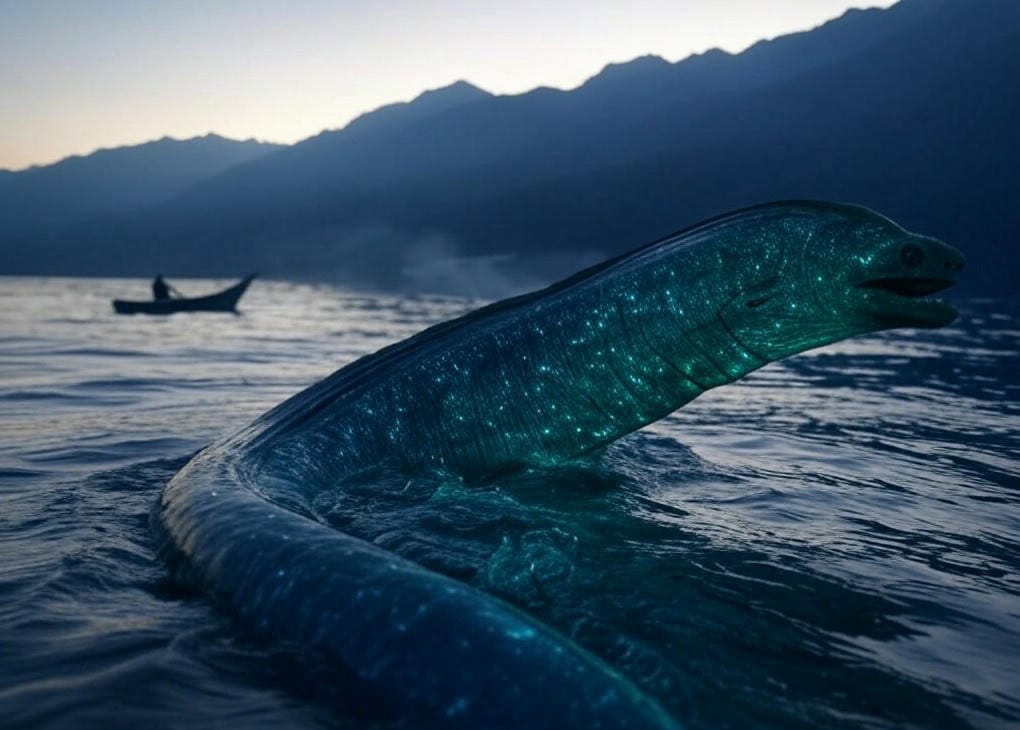
A Legend as Deep as the Lake
The Kutenai people knew about the thing in the water long before white settlers ever came to Montana.
Their stories spoke of a great serpent, powerful, old, watching. They warned people not to disturb it. Some listened. Others went missing.
In 1889, Captain James C. Kerr was steering his steamboat across the lake when he and his crew spotted a massive creature thrashing near the surface.
They described it as long and eel-like, with a body dark enough to blend into the waves.
That was the first widely reported sighting, but it wasn't the last.
The Serpent's Story
People started seeing it more often. Some said it was 20 feet long. Others swore it was closer to 40.
A few claimed they saw humps rising and falling, like a coil slithering through the water.
And always, always, it would disappear before anyone could get close.
The most unsettling reports came from those on the lake at night. A deep, slow wake in the water when no boat had passed.
The feeling that something was following them, just beneath the surface, just out of sight.
The Ones Who Saw It - and Wished They Hadn't
A fisherman near Bigfork once cast his line and felt something pull, hard. Not a fish. Something else.
He said it nearly yanked him overboard before the line snapped. When he reeled it back in, his hook was gone, as if something had bitten clean through the metal.
A family on a boat trip swore they saw a massive, dark shape rise up beneath them.
It passed under their boat, large enough to blot out the moon's reflection. They left the lake early that night. They never went back.
The Monster's Grip on the Imagination
Some claim it's an illusion, a trick of the light. Others say it's an oversized sturgeon. But those who've seen it up close, really seen it, don't offer theories.
They don't speculate. They just go quiet when the topic comes up, shake their heads, and say, I don't want to talk about it.
But the lake keeps talking. And sometimes, it answers back.
The Hitchhiker of Black Horse Lake - A Face on the Windshield
A Ride You Won't Forget
The road near Black Horse Lake is the kind of road where headlights don't reach far enough.
The kind where the wind howls, but the trees stay still. Truckers say it's best to drive straight through without stopping.
They've learned to keep their eyes forward. To never, never, look too closely at the side of the road.
Because sometimes, there's a man standing there. And sometimes, he's already in front of your car.
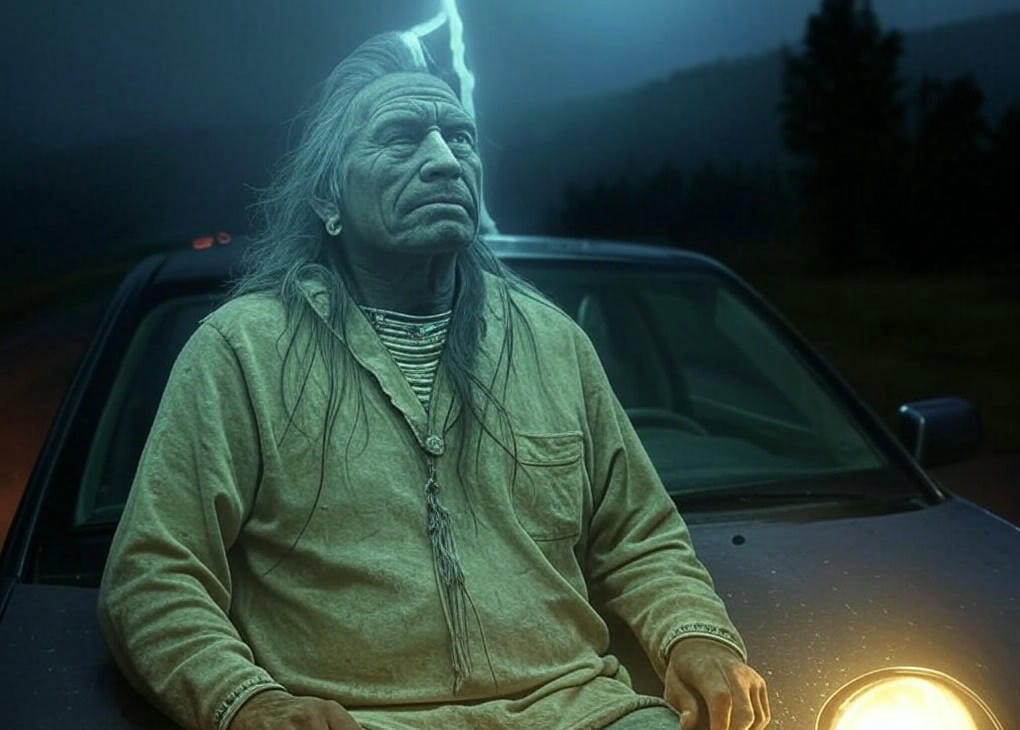
The Road's Bloody Past
The stretch of highway near Great Falls has seen too many accidents. Too many bodies broken on the asphalt, too many drivers swearing they hit someone, only to find the road empty.
Some say it started with a tragedy decades ago. A Native American man struck by a passing car, left to die in the cold, his body never recovered.
Some say it's older than that. A spirit tied to the land itself, appearing again and again, waiting for someone to finally take him home.
The Story That Won't Die
It always happens the same way. A figure appears, dark hair, weathered clothes, standing too still on the side of the road.
A driver glances, then looks back, and suddenly, he's in front of them. The brakes scream, the car lurches, and then... nothing.
No body. No blood. Just silence.
Some drivers keep going, their hands shaking on the wheel. Others stop, get out, and search the roadside.
That's the worst mistake. Because when they turn back, they see it, his reflection, staring at them through the windshield.
Eyewitnesses - The Ones Who Keep Driving
A trucker passing through on a late-night haul swerved hard, thinking he'd hit a man.
He stopped, breath coming in short gasps, heart pounding. But there was nothing there. His headlights stretched across the empty road.
When he climbed back into his truck, he checked his rearview mirror. And there he was, the hitchhiker, sitting in the backseat.
Another driver pulled over after seeing the figure ahead, but the moment she reached for the door handle, she felt something, a weight, press against the hood of her car.
She looked up and saw handprints appearing on the glass, moving, dragging toward her.
She never pulled over again.
The Curse of the Road
Locals say there's only one way to avoid him. Keep your eyes forward. If you see something, pretend you didn't. If you hear something, breathing, tapping against the glass, don't check the backseat.
And whatever you do, don't stop.
Sacrifice Cliff - The Leap into Darkness
Two Riders, No Return
The land around Billings stretches wide and empty, the kind of open space that makes a man feel small.
But to the west, the ground breaks. A jagged cliff rises above the city, its face worn smooth by wind and time.
The locals call it Sacrifice Cliff. Some say the wind sounds different there, like it carries voices stretched thin and broken.
People don't linger at the edge. They step close, just enough to see the drop, and then they step back. Because standing there, looking down at the rocks below, an idea slips into your head.
An urge. A question you'd never ask anywhere else. What would it feel like to fall?
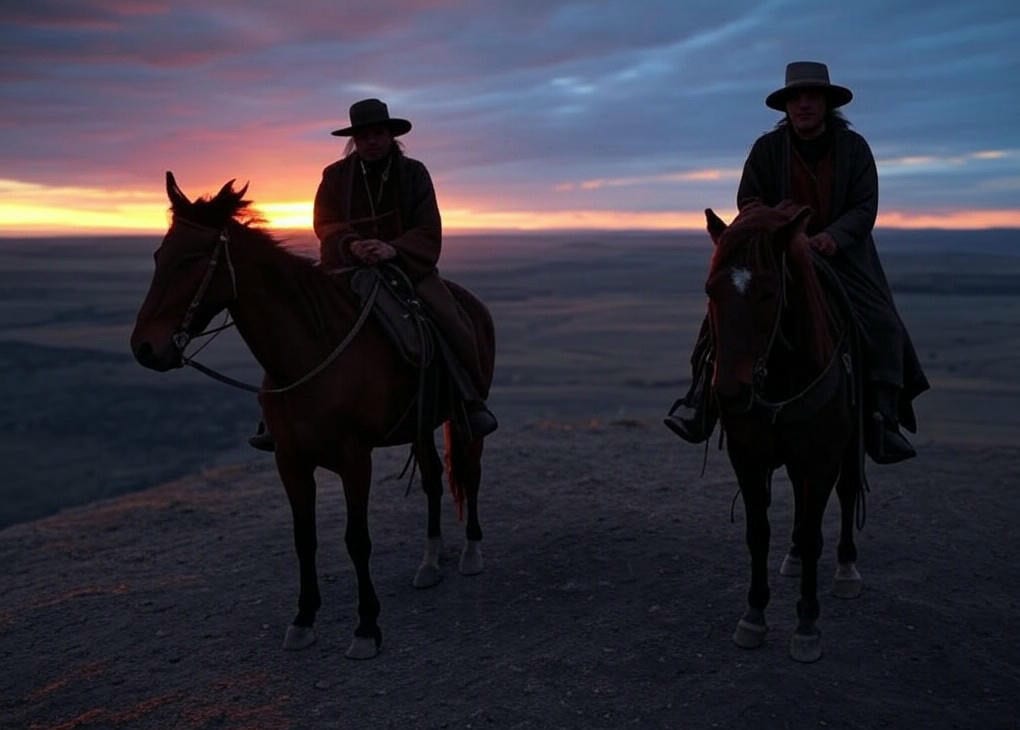
The Plague That Killed a Village
Long before settlers came, before Billings had a name, the Crow people lived here.
Their warriors rode through the valley, their families camped along the river. Then, the sickness came.
Smallpox burned through the tribe, leaving bodies behind like discarded husks. When two young warriors returned from a hunting trip, they found silence where their village had been.
No fires. No laughter. No voices to greet them. The sickness had taken everything.
They could have walked away. Started over. But grief doesn't work like that. They blindfolded their horses, mounted them in silence, and rode straight off the edge.
The Fall That Never Ends
The Crow say their spirits still fall. That's why the wind wails louder near the cliff, why the grass at the edge never grows thick.
Hikers hear hoofbeats at dusk, the rhythmic pounding of unseen riders. But there are no horses up there. No tracks. Just the feeling that something is still moving, over and over again, through the years.
Those Who've Heard the Voices
A man once hiked too close to the edge and swore he felt something push against his back.
Not a gust of wind, fingers. The pressure of a hand. He turned fast, expecting to see someone behind him. There was no one there.
Another visitor claimed she heard whispers just before sunset. They weren't words, not exactly. More like pleading. A hum of voices tangled together, rising from the rocks below.
Why No One Stays Long
People say you can feel something watching when you stand at the cliff's edge. A weight in the air, thick and pressing.
Some believe it's the spirits of the warriors trapped in an endless fall. Others think it's something else.
But everyone agrees on one thing, you don't go too close. And if you do, you never stand there for too long.
The Little People of the Pryor Mountains - Watch Where You Step
Tiny Shadows, Big Fear
The Pryor Mountains don't make sense. The trees grow wrong, bending when they shouldn't. The ground is too quiet, the air too still.
It's easy to feel lost, even when you know exactly where you are. The Crow and Cheyenne tell stories about this place, warnings wrapped in whispers.
They say something lives in the hills.
Not bears. Not mountain lions. Something smaller.
They call them the Little People. And they say you don't want to make them angry.
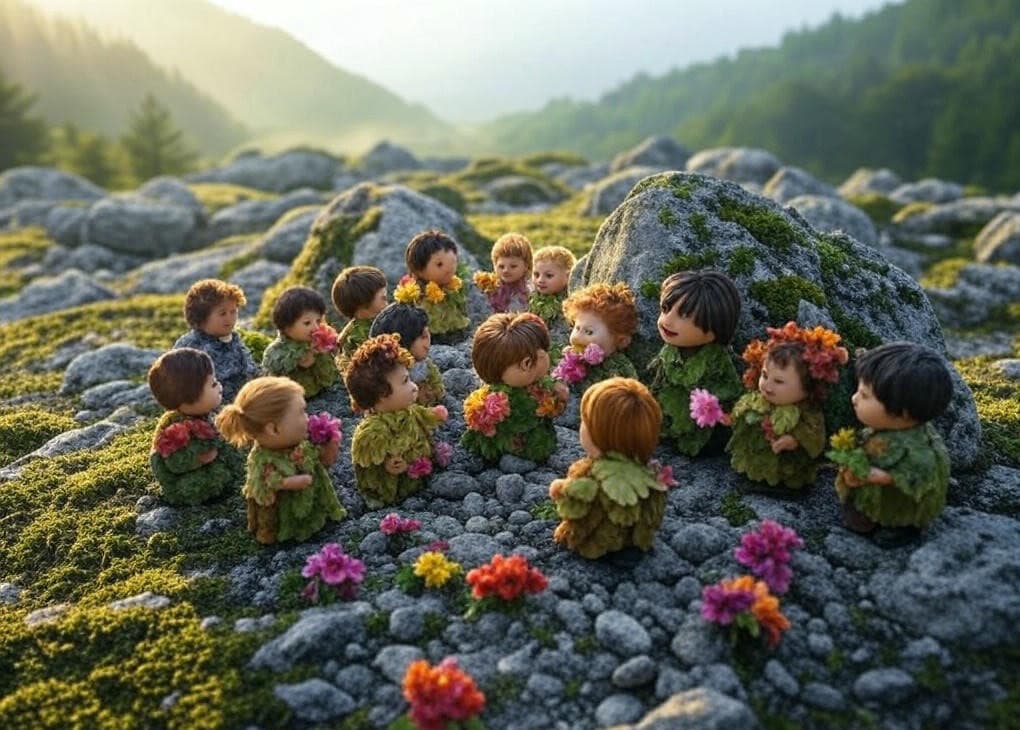
The Ancient Warnings
The legends go back centuries. The Little People were here long before the first settlers arrived, long before the Crow claimed the land.
No one knows exactly what they are. Some say spirits, and some say creatures, tiny beings, human-like, but not quite right.
The Crow believe they are warriors, fierce and unpredictable. They helped their ancestors once, but they don't trust easily. And when they're wronged, they take revenge.
Tricksters or Something Worse?
Some stories make them sound playful. A missing shoe here, a knocked-over lantern there. But other stories, those aren't playful at all.
A hunter once camped too deep in the Pryor Mountains. He woke in the middle of the night to the sound of rustling low to the ground.
When he reached for his rifle, it was gone. Not stolen. Moved. When he finally found it, the barrel was bent, twisted like soft clay.
Another man swore he saw tiny footprints outside his cabin, hundreds of them. Small, human-like, leading up to his door. But none leading away.
Strange Encounters
Hikers tell of laughter coming from the trees, high-pitched and sharp. Some say they've felt something tug at their backpacks, just for a second, just enough to make them stumble.
One family left their campsite for a short hike and returned to find everything overturned.
Tents ripped, food scattered, footprints circling the fire pit. The strangest part? The footprints stopped suddenly like whoever made them had vanished.
The Fear That Never Leaves
The Pryor Mountains stay quiet for a reason. People respect the stories. They step carefully, speak softly. No one whistles. No one takes things that don't belong to them.
Because the Little People are watching. And sometimes, if they don't like you, you never make it back out.
Liver-Eating Johnson - A Name Carved in Blood
A Man or a Monster?
The Montana wilderness has always been cruel. The winters eat men alive, the mountains swallow the unlucky, and the rivers pull bodies under without leaving a trace.
But there was a time when something else hunted here. Something worse than the cold, worse than the dark.
A man named John Jeremiah Johnson, though by the time his legend was fully grown, most just called him Liver-Eating Johnson.
He wasn't a ghost. Not a demon. Just a man. And somehow, that made him worse.
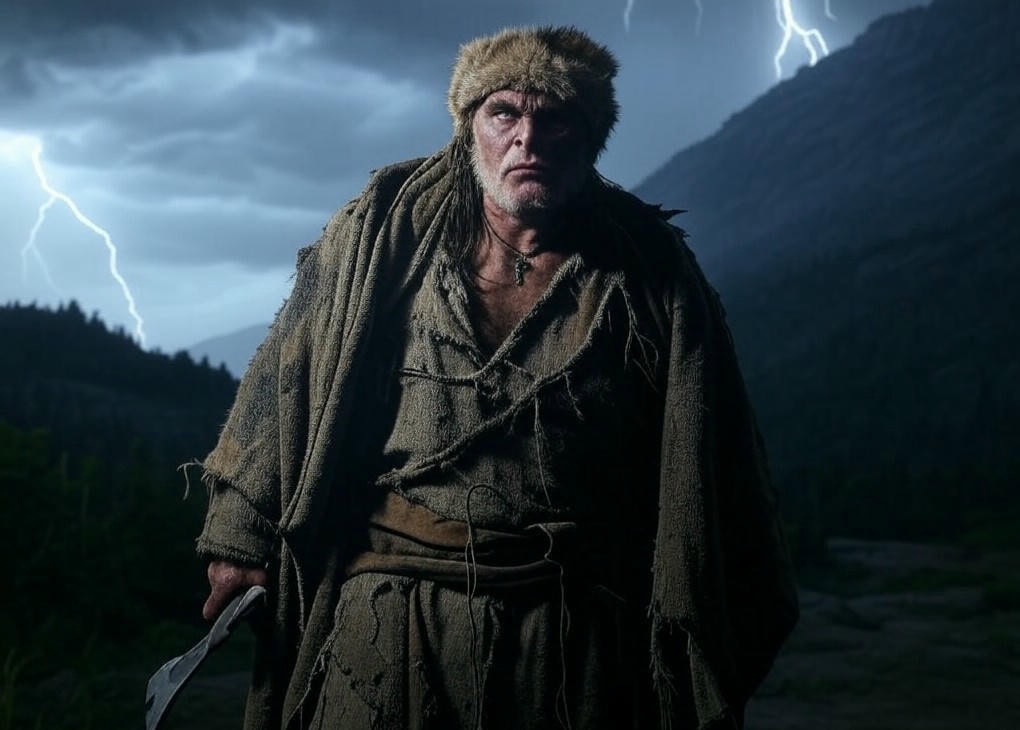
A War of One Man
It started with blood. His wife, a Flathead woman, murdered by the Crow. Why? Some say it was revenge for another killing, some say it was simply the way of things back then.
Johnson didn't ask why. He didn't care.
He started hunting them. One by one. He moved through the mountains like a shadow, waiting in the trees, striking fast.
And when they fell, when their blood soaked into the snow, he did something no man should ever do.
He cut out their livers.
And he ate them.
The Myths That Won't Die
They say he took fifty scalps. Others swear it was hundreds. No one knows for sure. There were no records, no neat little body count.
Just stories told by those who barely escaped, by those who saw him in the firelight, his face red with blood.
The Crow started to fear him, whispering his name in the dark. Warriors refused to go into the mountains alone.
It wasn't just his skill with a rifle or his ability to vanish into the trees, it was the way he made their dead part of him.
Some say he got his revenge. Others say revenge got him.
He lived long enough to die in a bed, an old man instead of a legend. But some men don't stay buried.
A Presence That Lingers
Visitors near his burial site have reported strange things. A heavy feeling in the air, like the ground itself remembers the violence.
A hunter swore he saw footprints in the snow, deep, fresh, heading toward the trees, but never away.
A man once visited his grave at night just to prove he wasn't afraid. He laughed, took a picture, and walked back to his truck.
The next morning, he woke up with bruises on his chest, bruises shaped like teeth.
The Mountain Still Watches
The legend of Liver-Eating Johnson has never faded. Maybe it's the brutality, or maybe it's because some things never really end.
People still see shadows in the pines, still hear footsteps crunching through the snow when no one is there.
And when they feel watched, really watched, they don't stay long.
The Boulder Hot Springs Hotel - She Watches from the Steam
A Beauty in the Mist, A Death in the Walls
Boulder Hot Springs Hotel still stands, its walls thick with history, its halls full of voices that shouldn't be there.
It looks inviting enough from the outside, warm lights, the promise of soothing water.
But inside, something lingers.
They say she waits in the steam. That if you listen closely, you can hear her footsteps on the tiled floor, slow and wet.
They call her Simone, and she never left.
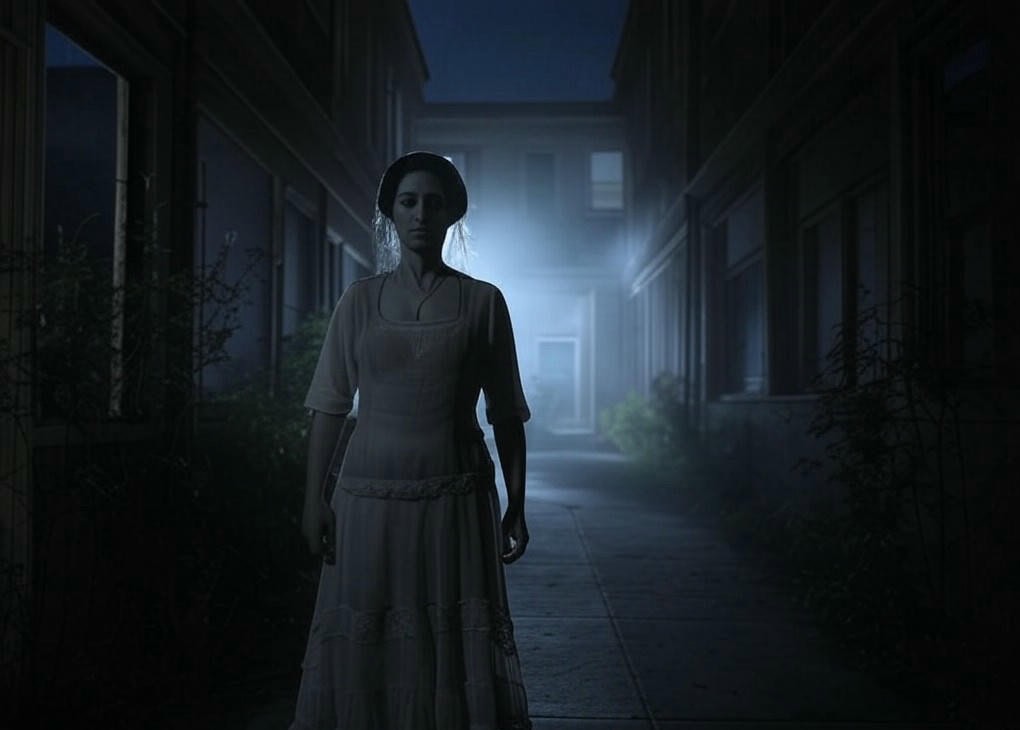
The Sin Behind the Luxury
In the early 1900s, the Boulder Hot Springs Hotel wasn't just a hotel. It was a place where men came to do things they wouldn't talk about in daylight.
Gambling, drinking, women.
Simone was one of those women. No one knows exactly what happened to her. Maybe she crossed the wrong man.
Maybe she tried to leave and someone wouldn't let her. What they do know is this, she was killed in one of the rooms. Strangled. And her body was never found.
The Walls Breathe, the Floors Creak
Strange things happen at Boulder Hot Springs. Guests report doors slamming on their own, the air growing heavy and stifling.
The steam room, where she's been seen most often, stays warm, but people walk out with chills.
Some say they've seen her reflected in the glass, standing behind them in the mist.
But when they turn, there's no one there.
Guests Who Left Early (and Why)
One man swore he felt someone sit down on the bed next to him, except he was alone.
He didn't stay another night.
A housekeeper once found all the mirrors in one room covered with condensation, like someone had been breathing on them.
In the center of each one, written in streaks, was a single word: stay.
A woman checked in for a weekend retreat. She left before midnight, pale and shaking. She wouldn't say what she saw.
The Woman in Red Still Walks
The hotel still operates, still welcomes guests. But some refuse to stay in certain rooms. Others won't go near the steam bath.
Because sometimes, in the thick mist, when the room is quiet and empty, if you look long enough, you'll see her. And she'll see you too.
The Dumas Brothel - The Ladies Who Never Left
The Red-Light District Never Went Dark
Butte, Montana, was once a city of miners, their days spent deep underground, their nights filled with whiskey, gambling, and women.
The Dumas Brothel stood at the heart of it all, a place where money changed hands and no one asked too many questions.
The women who worked there had their own kind of power, until they didn't. Some left. Some didn't get the chance. Some are still there.
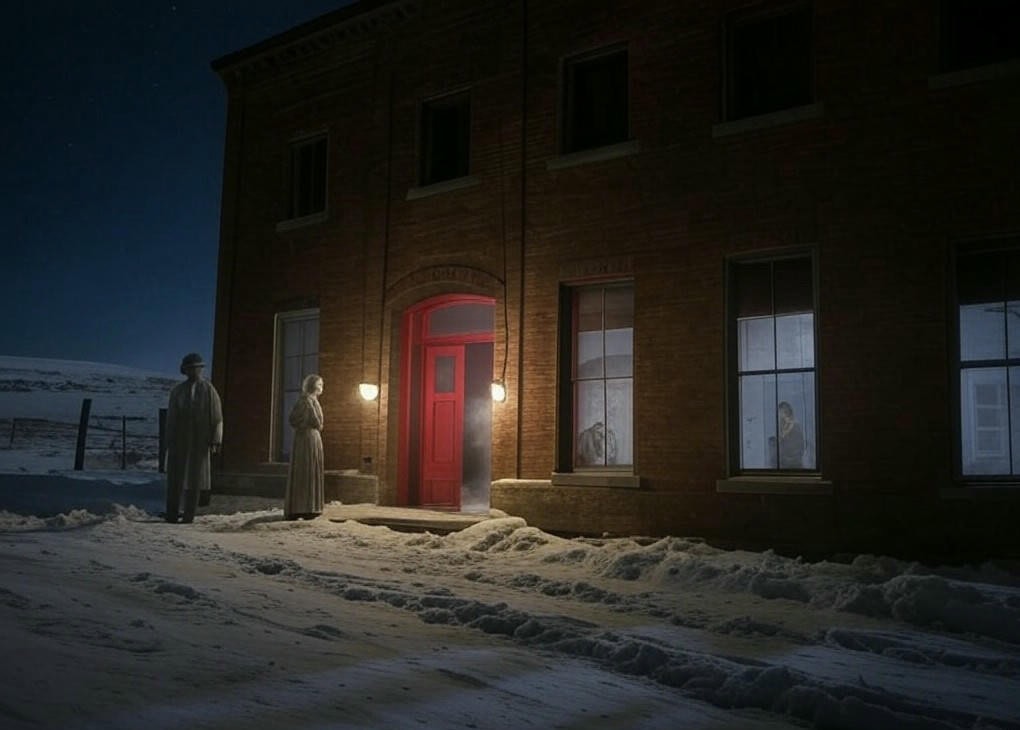
A House of Business... and Tragedy
The Dumas operated from 1890 to 1982, making it one of the longest-running brothels in the country.
The walls saw thousands of men, desperate for company, careless with their money, sometimes violent with their hands.
Not every woman made it out. A girl was found hanging in a closet, her neck snapped too cleanly for a suicide.
Another was beaten so badly she never walked again. And there were others, whispers of disappearances, rooms that were cleaned too quickly, doors that were nailed shut.
They say the house remembers.
The Girls Still Work the Rooms
Visitors hear voices drifting through the empty halls, laughter that fades the moment they step inside a room.
Footsteps echo down the staircase when no one is there.
The basement, cold even in summer, makes people uneasy. Some claim they feel hands brushing against their arms, light and teasing.
Others feel something colder like fingers wrapping around their throats.
Who's There?
A woman on a ghost tour stepped into a small room on the second floor, where the cheapest workers once stayed.
She felt something touch her shoulder. When she turned, no one was there, but the air smelled like old perfume, thick and cloying.
A man walking through the basement felt a hand grip his wrist, pulling him toward the darkest corner.
He ran. He didn't go back.
One night, a former owner, alone, heard the sound of high heels clicking on the wood above him.
He waited. No one came down.
Business Never Closed
The Dumas is now a museum open to the curious and the foolish. Some visitors leave with only stories, while others leave with something else.
And when the lights go out, when the doors lock, and the building settles into silence, maybe it's not really empty at all.
The Ghost of Dorothy Dunn - A Girl in the Blue Dress
A Child's Playtime Cut Short
Bannack, Montana, is a ghost town in every sense of the word. Empty buildings lean under the weight of time, the wind carrying voices long forgotten.
One of those voices belongs to Dorothy Dunn. A little girl, gone too soon, still waiting for someone to play with.
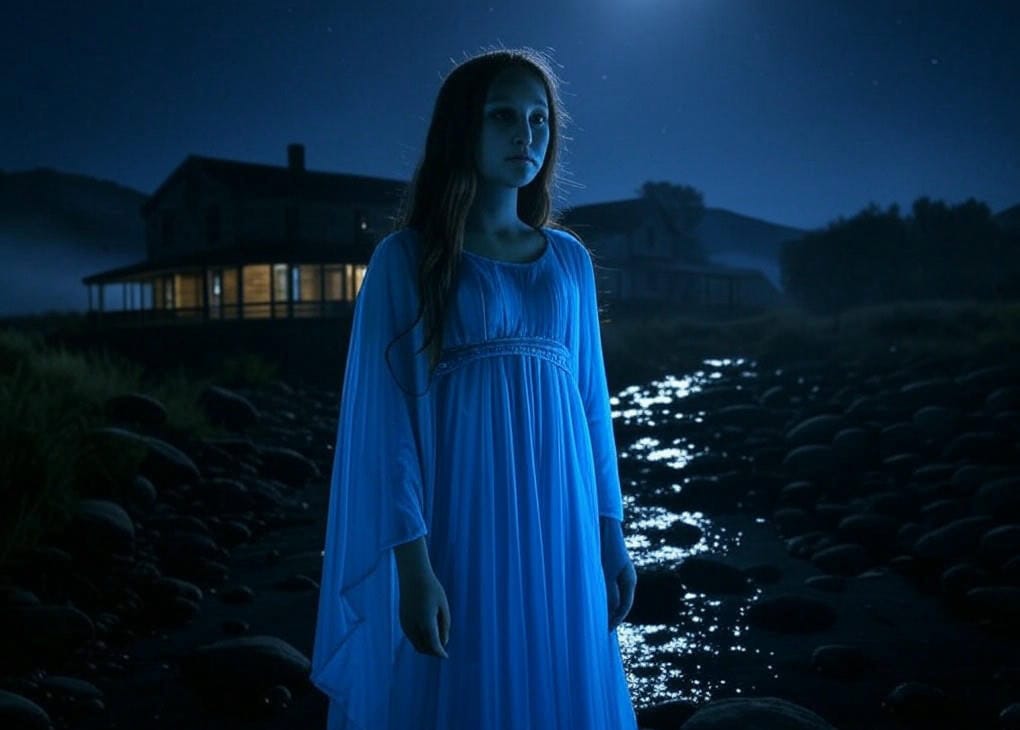
A Town Frozen in Time
Bannack was once a gold rush town, alive with the sound of miners, saloons, and dreams that didn't always end well.
Then, the gold dried up. The people left. The silence took over.
Dorothy never got the chance to leave.
They say she drowned in Grasshopper Creek, just a child wading too deep, swept under by the cold, fast water.
Some think she tripped on something unseen, maybe a root, maybe a hand.
A Game That Never Ends
People see her. A flicker of movement near the old Meade Hotel. A small figure in a blue dress, standing just inside a doorway, watching. She doesn't speak. Sometimes, she smiles.
Sometimes, she disappears before you can blink.
Encounters with the Little Girl in Blue
A couple walking near the creek felt something tug at their hands, small fingers pulling at their sleeves.
They turned, expecting to see a child. No one was there.
A man swore he heard giggling inside the Meade Hotel, the sound bouncing off the empty walls.
He followed it up the staircase. When he reached the top, a door slammed shut in his face.
A child visiting with her family pointed to an empty chair and said, "She's sitting right there."
Dorothy's Never Alone
Some say she's friendly. Others say she's lonely. But a few believe there's more than one spirit in Bannack.
And if you see Dorothy, standing still in her blue dress, watching you, maybe she's trying to warn you about what's behind you.
The Phantom of the Montana Territorial Prison - The Walls Still Hold Them
A Prison That Never Emptied
Deer Lodge looks peaceful now, a quiet Montana town where people nod at each other on the street.
But on the edge of town, something old and ugly still stands, the Montana Territorial Prison.
The stone walls are thick, pitted by time. The iron bars are rusted but unbroken. Inside, the air is heavy, like it hasn't been disturbed in years.
The men who were locked inside these cells, killers, thieves, the hopeless, are gone. But some things refuse to leave.
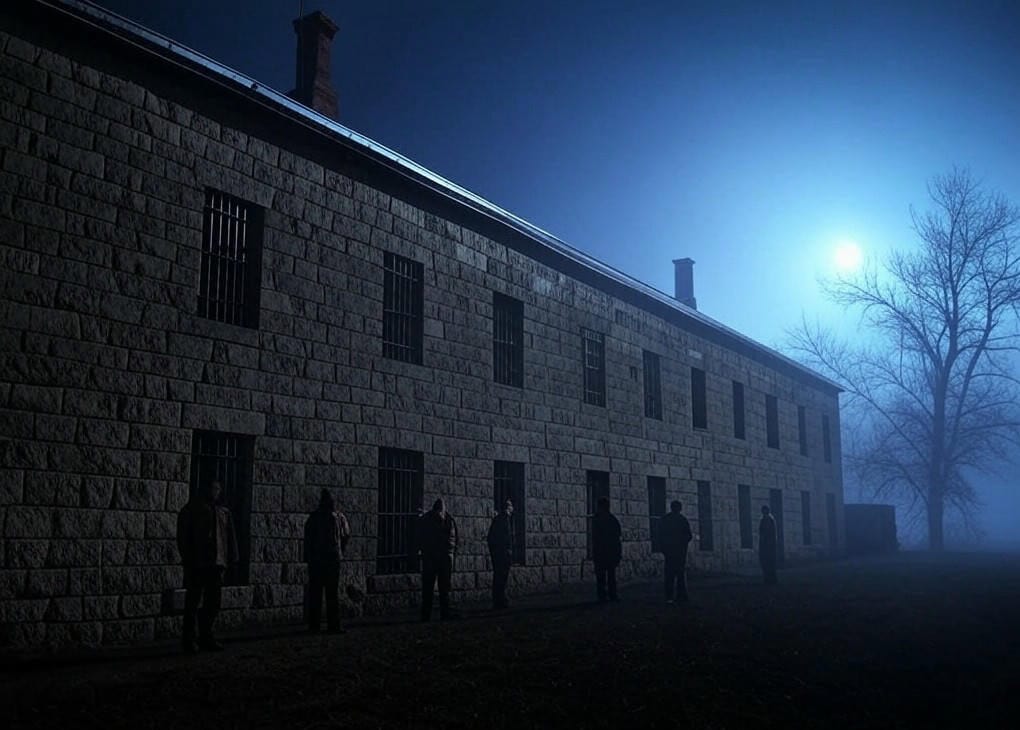
A History of Blood and Desperation
Built in 1871, the prison was a place of suffering from the start. Overcrowded cells, brutal conditions, men packed together like animals.
The guards didn't care. If the prisoners killed each other, it was just one less mouth to feed.
Riots broke out more than once. The worst happened in 1959. Inmates overpowered the guards, took hostages, spilled blood.
One prisoner, a man named Jerry Myles, led the rebellion. By the end of it, he was dead, shot through the head. Some say he still walks the halls at night, searching for a way out.
Ghosts in the Cells
Tour guides say they've heard voices in empty corridors, the low murmur of men talking, though no one is there.
Doors swing shut on their own, locking behind unsuspecting visitors.
The solitary confinement cells, known as "The Hole," are the worst. The darkness is so thick it eats the light.
People who step inside say they feel something brush against them, something cold, something waiting.
The Men Who Never Left
A security guard once heard footsteps following him down the cell block. Heavy boots, slow and deliberate. When he turned, expecting to see a coworker, the corridor was empty.
A visitor taking photos captured something he couldn't explain, shadowy hands reaching through the bars. He deleted the picture.
One former inmate, decades after his release, refused to walk through the gates again.
He said it still smelled the same, like sweat, misery, and something worse.
The Prison Still Stands... and Waits
The tours continue. People come, they listen, they laugh nervously at the ghost stories. Some feel nothing.
But others leave with bruises they can't explain.
The Haunting of Virginia City - Where the Dead Walk at Night
A Town That Refuses to Die
Virginia City isn't a real city anymore. It's a relic, a slice of the past frozen in time. The wooden sidewalks creak, the old buildings lean, and if you listen closely, you can hear the echoes of a town that never truly died.
People visit during the day, walking through the old saloon, peering into the dusty windows.
But at night, the streets feel different. The air tightens. The buildings seem to lean closer.
The ghosts come out.
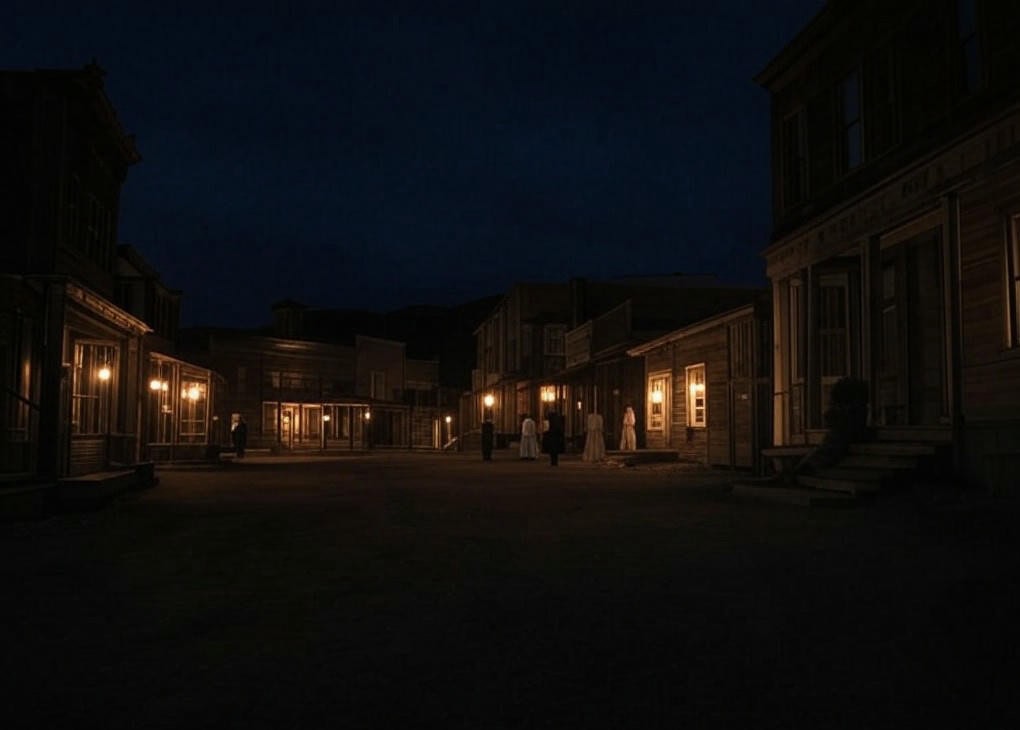
The Hangings That Never Ended
This was vigilante territory. When the gold rush brought outlaws, the town took justice into its own hands. The vigilantes hanged more than a hundred men in the span of a few years.
No trials. No mercy. The bodies swung from trees, from gallows, from anything that would hold a rope.
People still see them. At dusk, when the light turns the sky red, shadowy figures hang from invisible nooses.
You look once, and they're there. You blink, and they're gone.
A Ghostly Saloon and a Cursed Theater
The Bale of Hay Saloon is the oldest bar in Montana. People sit, drink, and tell ghost stories, but sometimes, the ghosts answer.
Glasses move by themselves, and doors slam without warning. The mirror behind the bar reflected more than a few faces that didn't belong to the living.
Then there's the Opera House. Actors hear whispers backstage, voices urging them to leave.
The audience sometimes sees a figure standing on the balcony, a man in old-fashioned clothes, watching.
No one has ever seen him arrive. And no one has ever seen him leave.
The Town That Whispers Back
A woman walking alone at night once heard footsteps behind her. When she turned, she saw a man in a long coat.
He tipped his hat and smiled. She looked away for a second. When she looked back, he was gone.
Tourists sometimes report missing time, minutes, or hours unaccounted for. They walk into one building and come out of another, unsure how they got there.
A boy once told his mother he had made a new friend. He pointed at an empty rocking chair and said, "He's sitting right there."
Virginia City Never Sleeps
During the day, it's a historical site. A novelty. A reminder of the past.
But at night, the past reminds you.
Disclaimer: The illustrations in this article are artistic representations created for informational purposes only. They are not actual photographs or direct visual documentation of the events, locations, or figures depicted.

